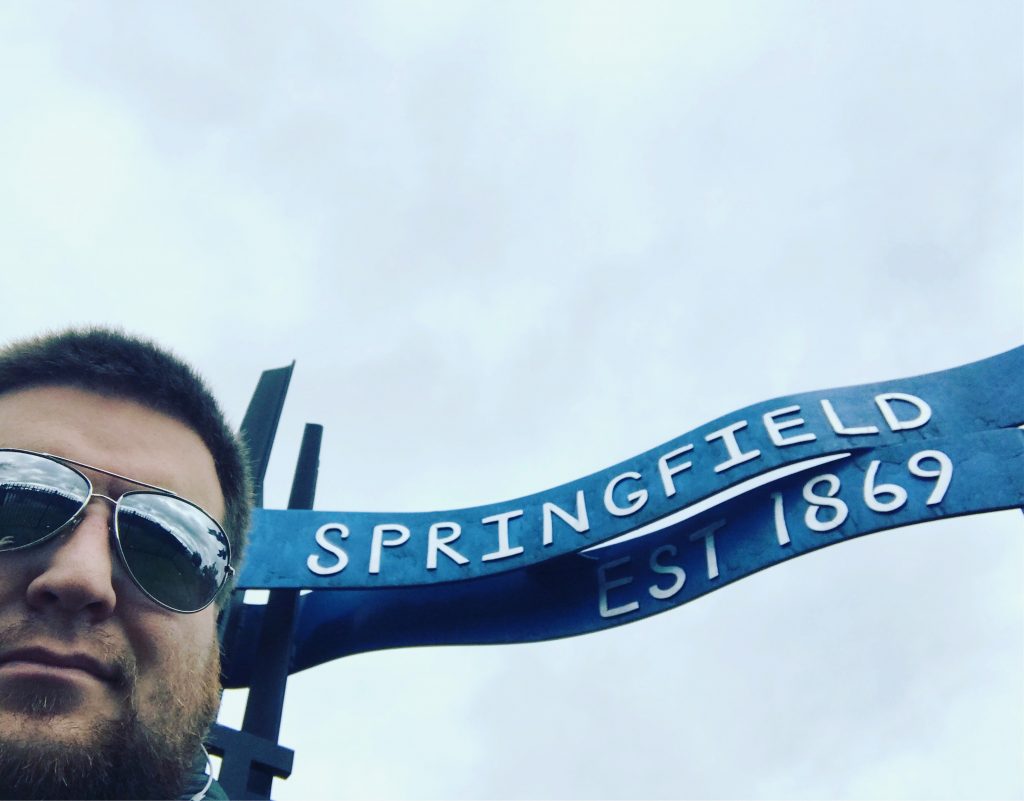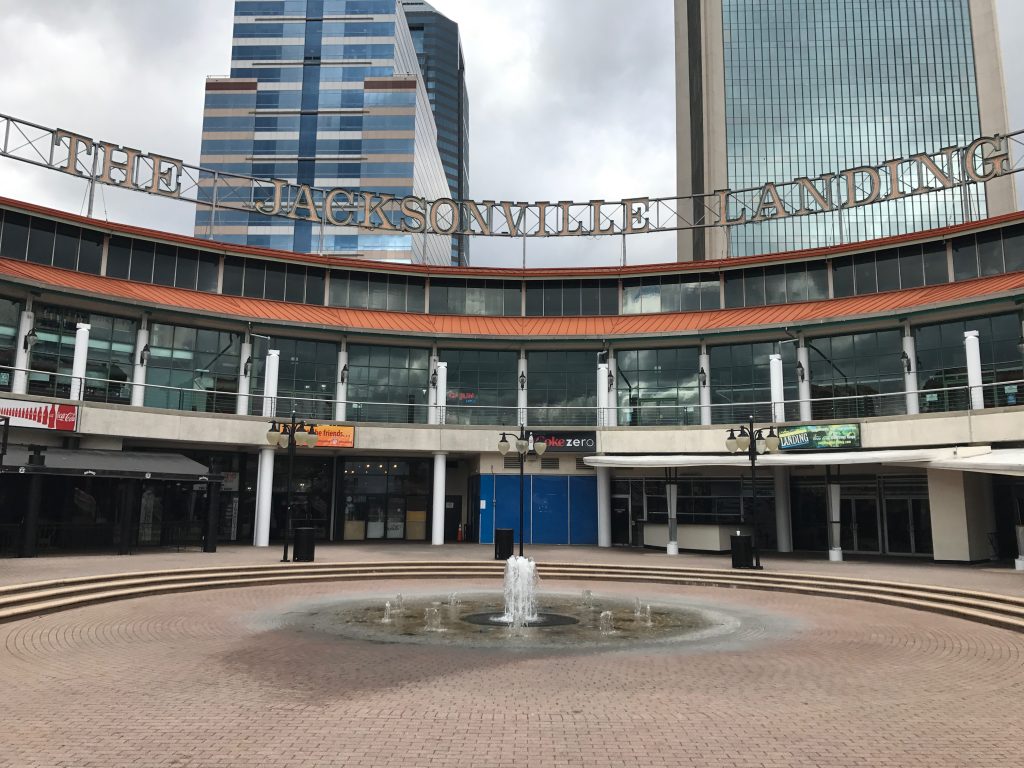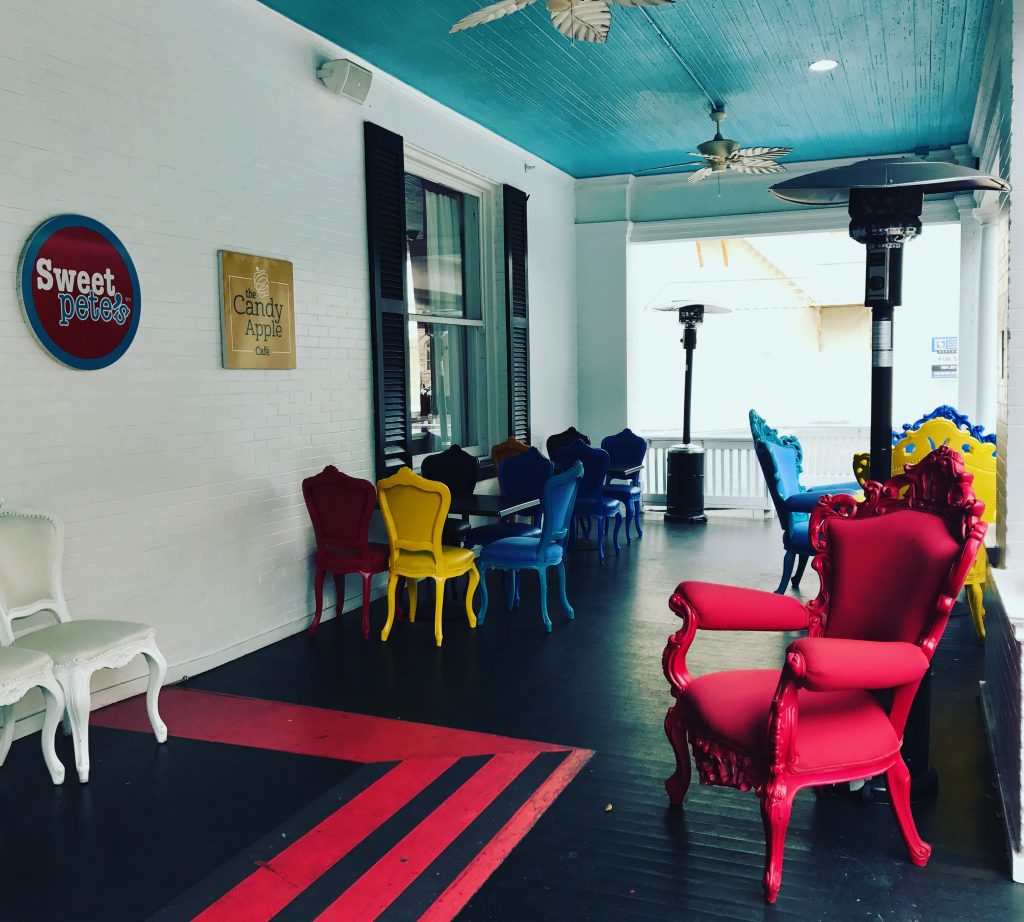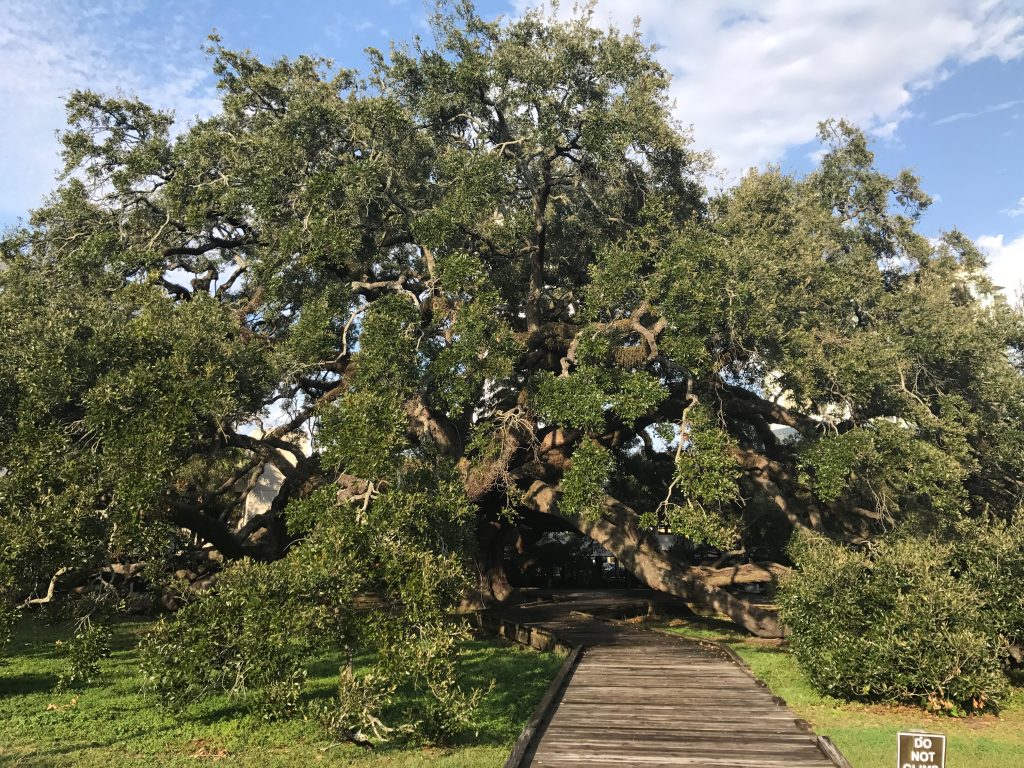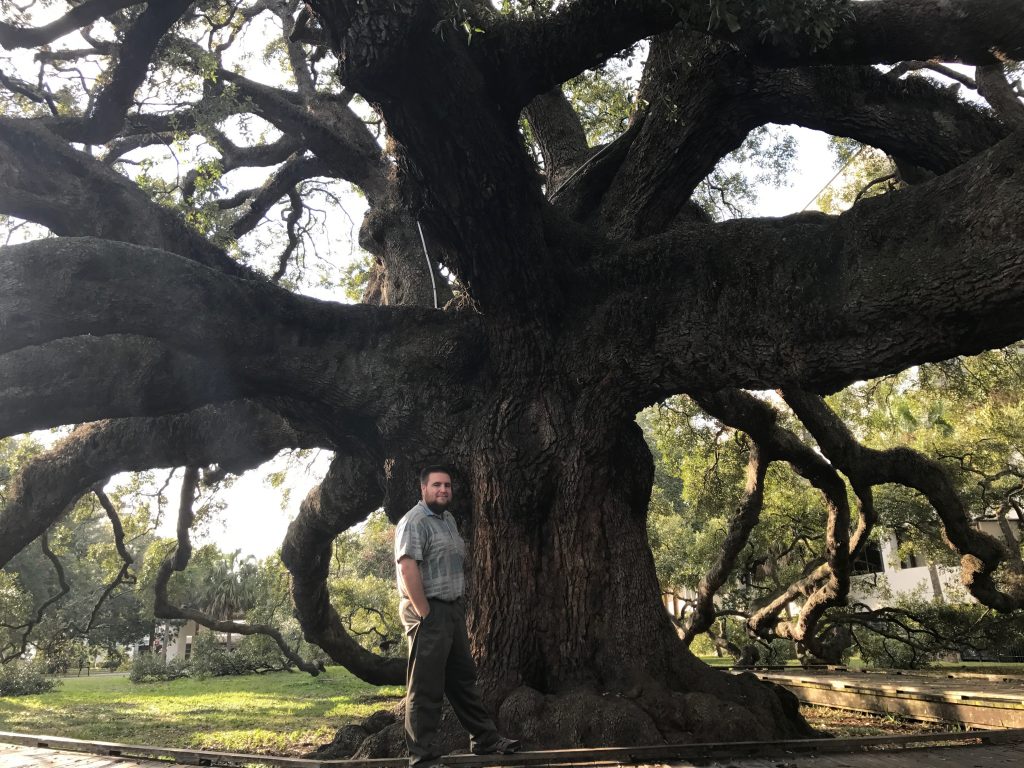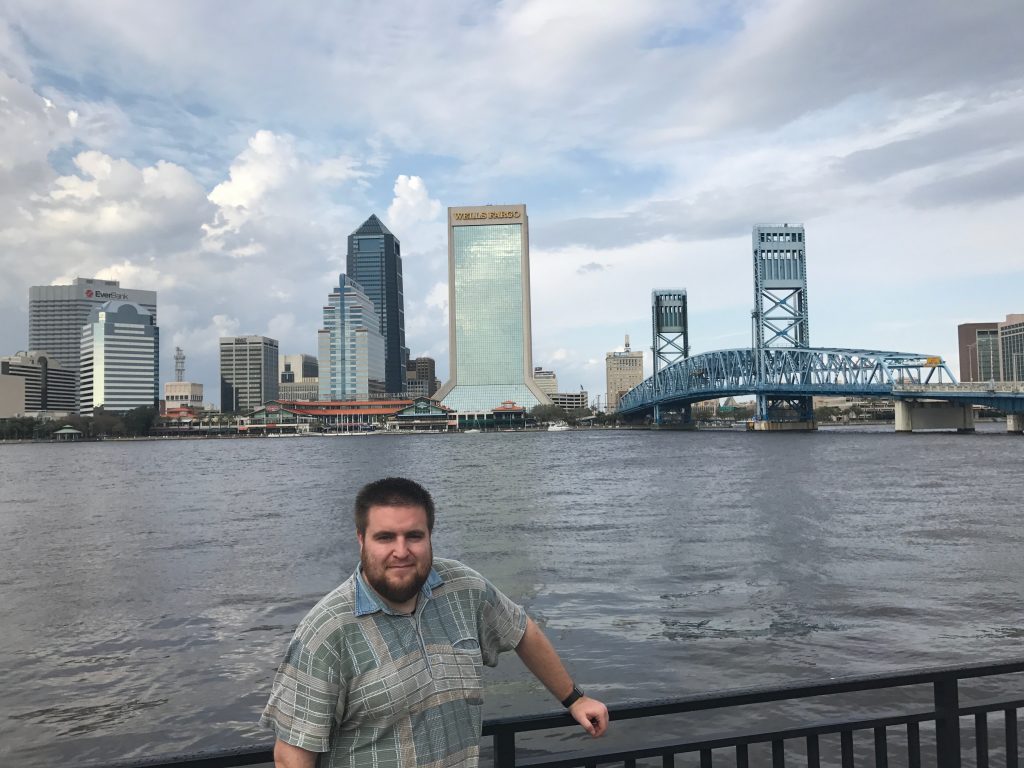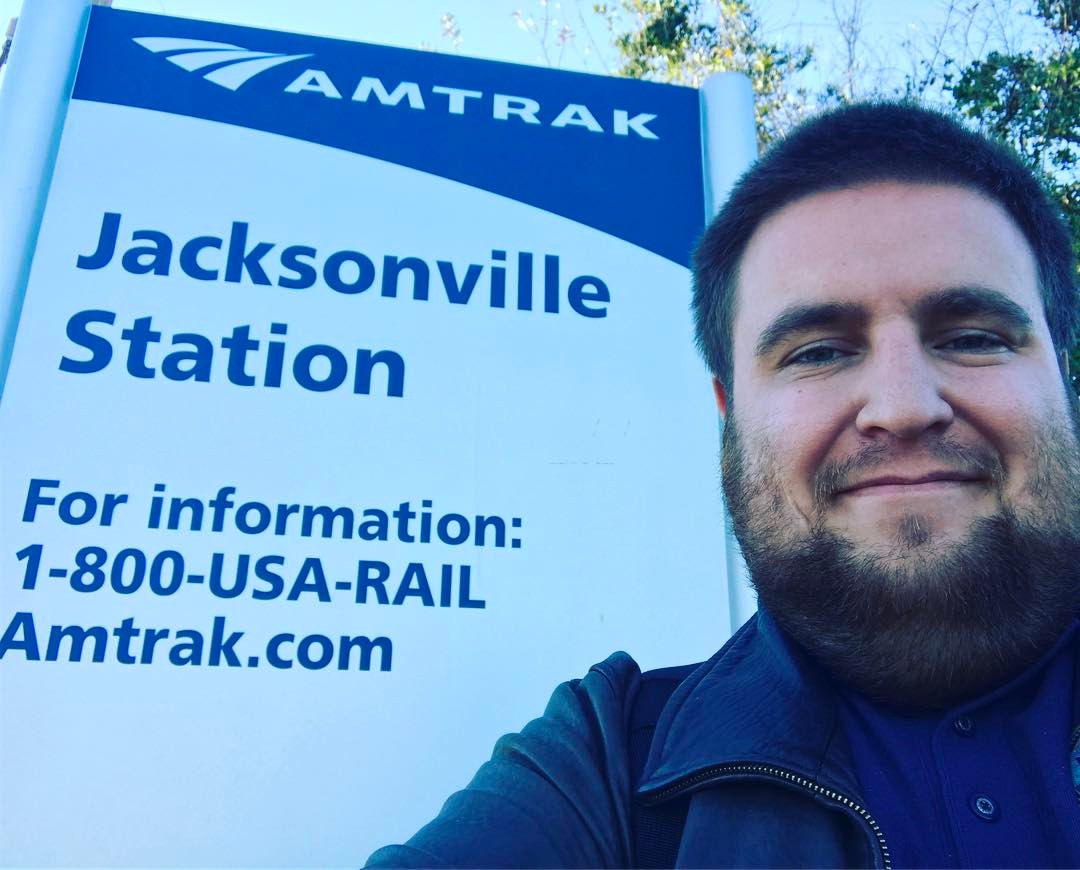
“Seeing the very flat land, without a single mountain…and full of beautiful trees and woods along the seashore, I leave it to you to imagine the happiness we felt,” was the description the French wrote back as they established Fort Caroline upon their 1564 arrival in present-day Jacksonville, Florida.
I felt a similar delight having journeyed into Jacksonville, even 450 or so years after the French, as I disembarked my train, the Silver Meteor.
Jacksonville, the largest city by square area in the continental U.S., had me optimistic. I had more or less just fled Palatka after being cautioned by a local to “watch my back.” Maybe small town America was not for me.
Sadly, the Amtrak train no longer goes into the city center, requiring an Uber ride into town.
“Mayberry meets Detroit,” is how Sean, my Airbnb host, described his city, specifically the historic neighborhood of Springfield where he lived.
Springfield had retained its small town vibe despite being directly adjacent to the downtown high-rises. This neighborhood had been fortunate to be spared from destruction during the Great Fire of 1901. A small creek dividing Springfield from the city center had served as a firebreak.
“In just 8 hours nearly 10,000 people were homeless, 2,368 buildings were lost, 146 city blocks were destroyed, but miraculously only 7 people perished. Jacksonville’s 1901 Fire remains the most destructive burning of a Southern city in U.S. history,” according to the fire’s historic marker.
The fire contributed to a construction boom in Springfield, as the area was perceived to be outside of the “Fire Zone.”
Its historic designation was a reflection of the high concentration of American Vernacular Architecture, which were simple wood framed buildings often accompanied by porches or verandas.

A Good Example Of The Architecture In The Neighborhood
“Most of these houses have been here for over 100 years now and they will be here long after new homes built today,” explained Sean.
“My house was constructed with old-growth lumber. It is mature and dense. They don’t make houses out of it anymore,” he continued as he proudly knocked on a nearby wall.
Making my way downtown, the Detroit part of his description became apparent.
Main Street, which the name typically implies would be a busy place, was in desperate need of a makeover and investment. Many blocks had more vacant storefronts than filled ones.
Some new renovations were taking place. The few businesses that persisted were some small shops, local food venues and a Popeyes Louisiana Kitchen.

Main Street In The Springfield Historic Neighborhood Of Jacksonville, Florida
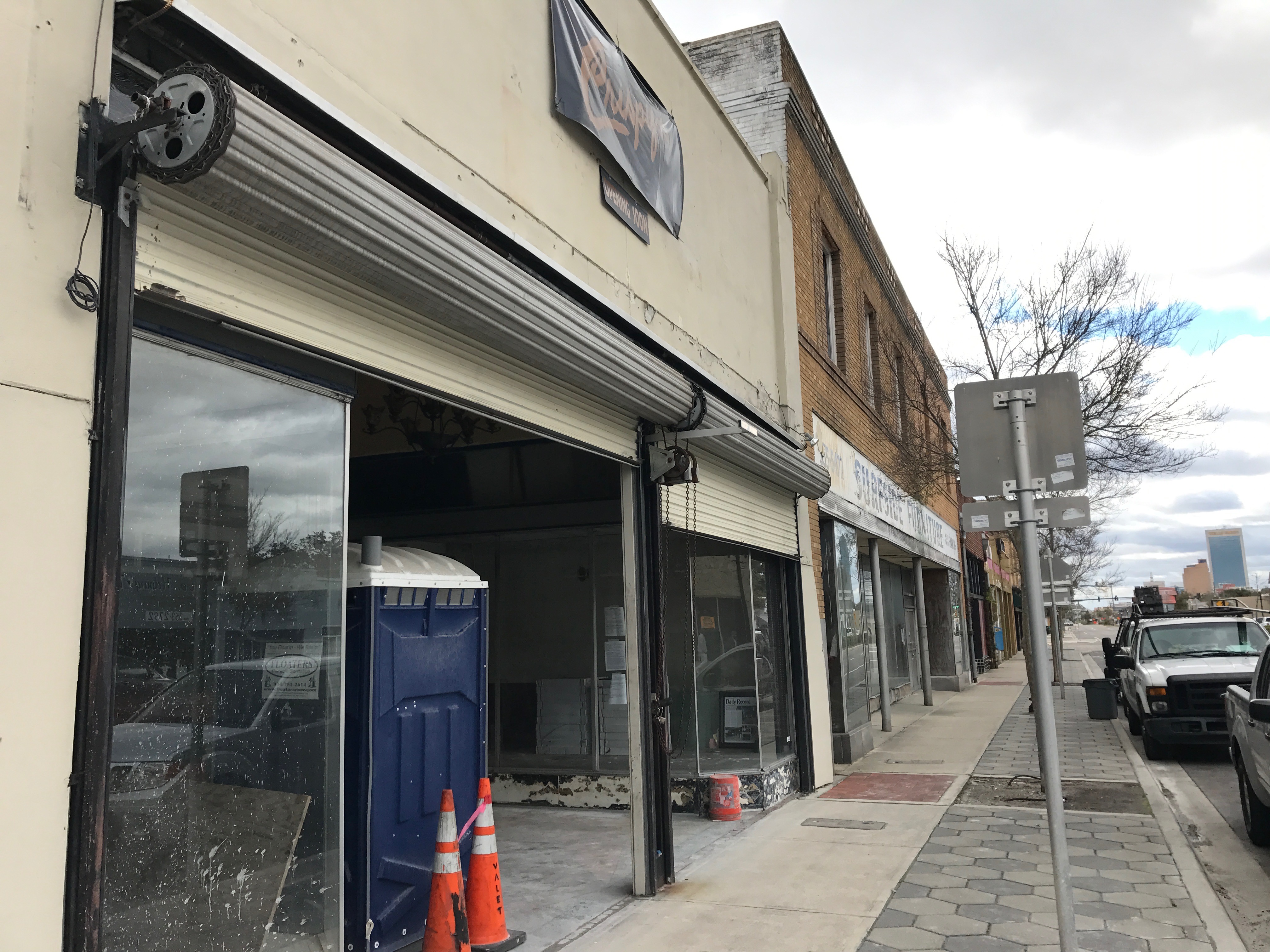
Main Street In The Springfield Historic Neighborhood Of Jacksonville, Florida

Main Street In The Springfield Historic Neighborhood Of Jacksonville, Florida
A homeless person spotted me taking pictures and called me over.
James, a 66-year-old homeless African American Navy Veteran, had called Jacksonville home for 60 years.
“That storefront was a candle store,” as he pointed to one of the dilapidated buildings.
“Down there was a pharmacy, and just before Confederate Park was a health clinic. But, they have been gone for years now. There is nothing here now. If I need assistance I have to venture into downtown.”
“Over there I had my first job,” as he pointed to an empty corner building.
“It was a popular bar back in my day. I started at $1.60 an hour, but it was enough….but later it wasn’t. My wage did not keep up.”
“…At some point everyone just stopped playing fair.”
James described that African Americans were actively frozen out of business ownership in Springfield. This frustrated community relations and rising tensions correlated with an increase in crime.
“The White business owners eventually just gave up on us and there was no one else with any money to fill the void. None of us had the opportunity to save; we had to spend every penny we got in order to just survive.”
“That is why you are taking photos of empty storefronts.”
Downtown Jacksonville was quiet.
I was the only tourist to show up for the bi-weekly walking tour. It was a shame because my tour included visiting the 42nd floor of the Bank of America Building to get a panorama of the city.

Bank Of America Building In Downtown Jacksonville

South View From The Bank Of America Building In Downtown Jacksonville
I also had the opportunity to visit the underground tunnels connecting the old Atlantic National Bank, Barnett Bank, and Florida National Banks. These tunnels allowed bank workers to physically move money between the bank and the vault without ever stepping outside.
The Atlantic National Bank vault was even on display.
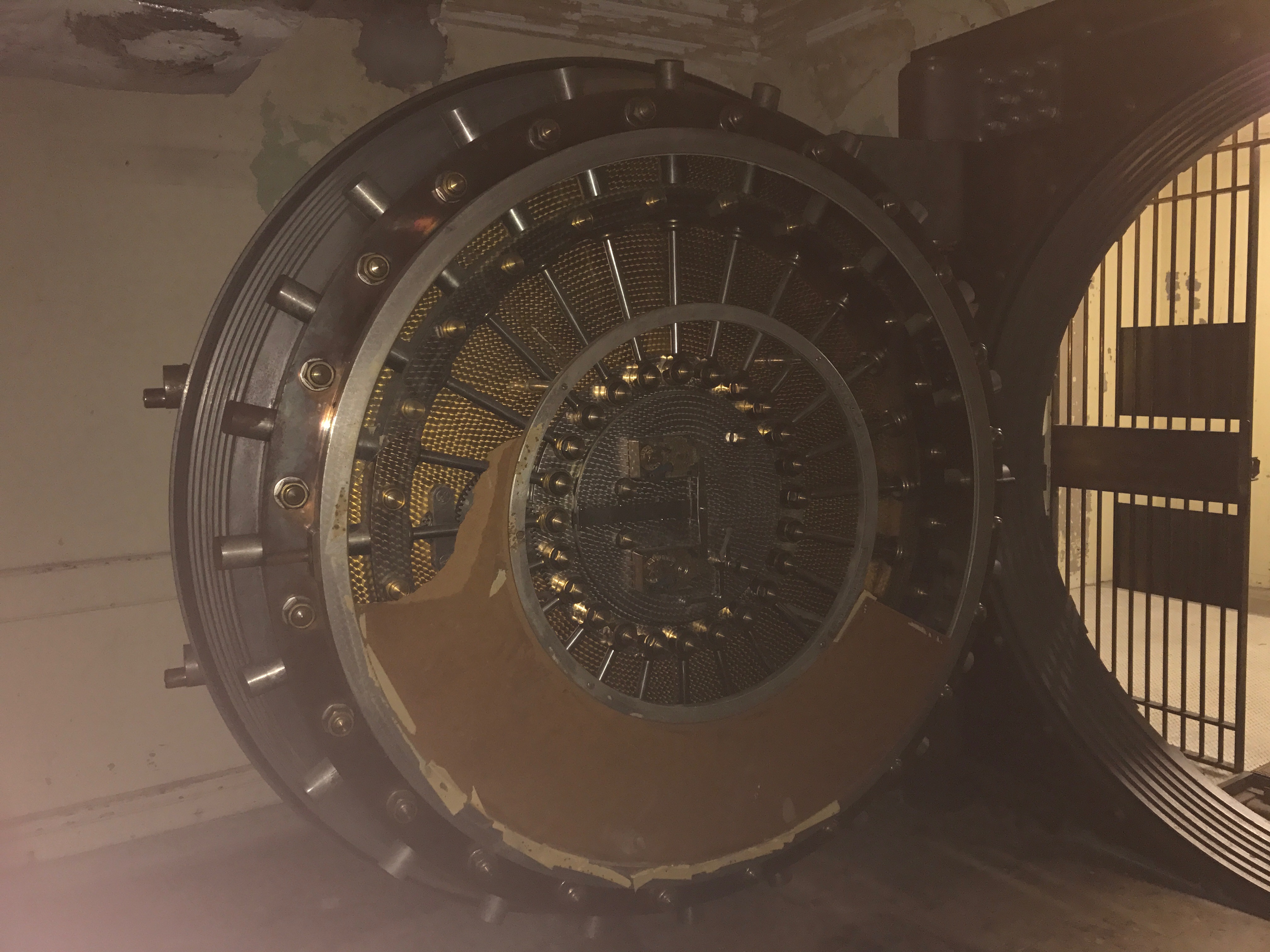
What Remains Of The Vault Door (Swung Open)

Vault Door Opening

Safety Deposit Boxes Inside Vault
At Fionn MacCool’s Irish Pub in Jacksonville Landing, a two-story marketplace alongside the St. Johns River, workers outnumbered patrons.
Jacksonville Landing
“Why is it so quiet,” I inquired with the bartender.
“Right around the corner,” as he pointed to his right, “was a shooting last week that killed a sixteen year old. There was another shooting nearby as well not long ago. It has put quite a damper on things.”
However, not everything was gloomy.
The city library, with “OPEN TO ALL,” above its entrance was busy and bustling with people.

Jacksonville Public Library
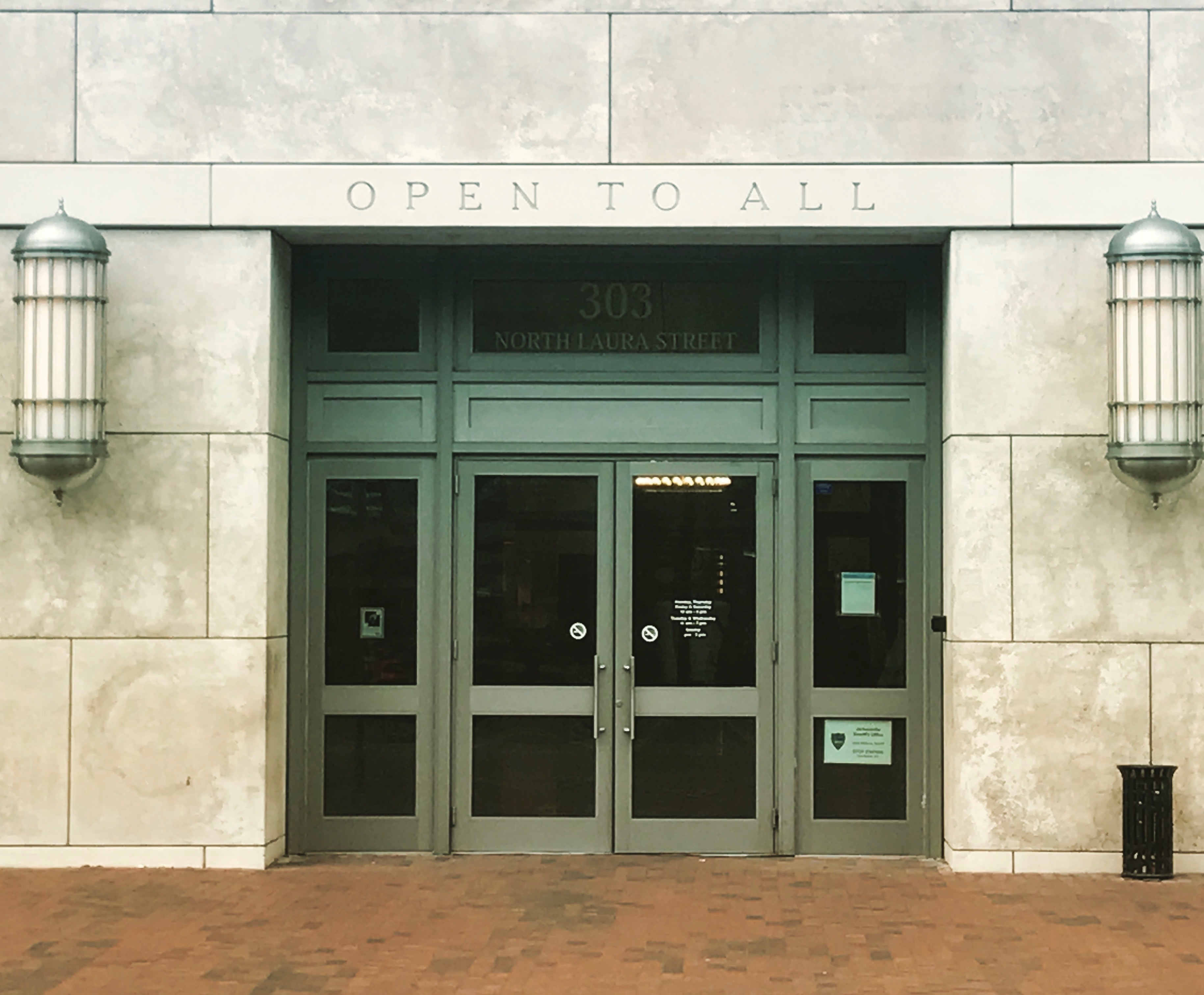
Front Doors Of The Library
The city’s bookstore, Chamblin’s Uptown, was also thriving.
While I did not find my book for sale, Paul Theroux had an entire bookshelf dedicated to his works.
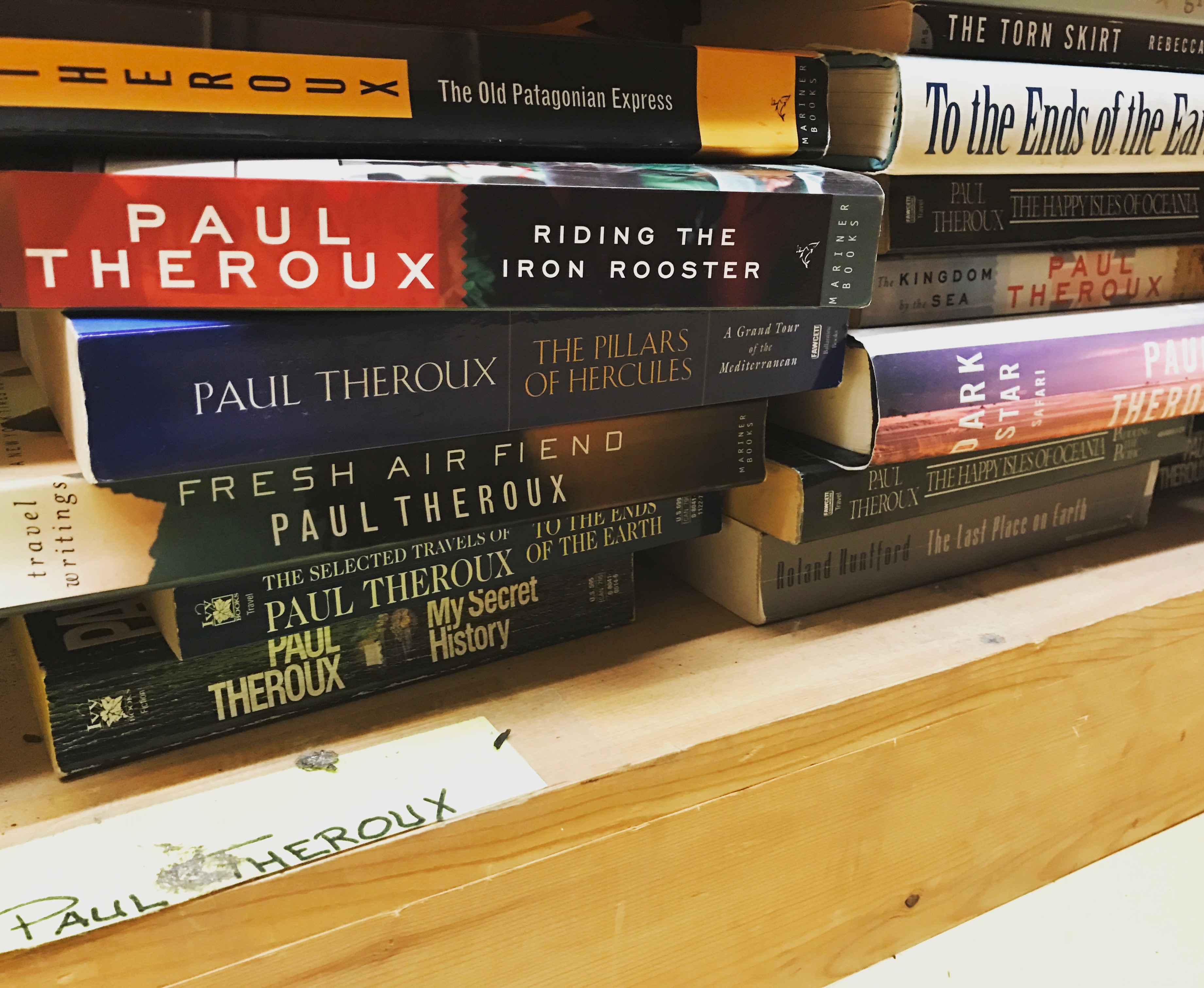
Theroux’s Shelf — No Shelf For Me!
Oddly, the bookstore had many travel categories from regions such as Europe, Africa, the Middle East, India, and Asia but not a dedicated category to travel in Russia!
A recent addition in downtown was the 23,000 square foot Sweet Pete’s Candy Shop or as they say, “The Sweetest Destination on Earth.”
Peter Behringer had sweets in his genes. He was the “Peter” in Peterbrooke Chocolatier, his mother’s chocolate business that he had been involved in since he was 11 years old.
Desiring to expand beyond chocolate, he left the family business to start his own enterprise including items like taffy, candy apples, and hand pulled lollipops.
While having candy know-how, Peter struggled with growing from his small location in Springfield.
However, he managed to get his business on the reality series The Profit, where entrepreneur Marcus Lemonis applied “his capital and expertise to lead companies to success.”
Lemonis scouted out the old historic Seminole Club, where Presidents Roosevelt and Kennedy once visited. The site had been vacant for the previous decade, making it ripe for redevelopment.
Me Sitting On The Balcony Near The Very Spot Teddy Roosevelt Once Gave a Speech From
The relocated kitchen has since continued to develop and thrive.
Note The Multi-Colored Oversized Chairs — It Is To Make One Feel As A Child Again
Visitors can observe candy makers hard at work from the balcony and view an authentic Golden Ticket from the original Willy Wonka & the Chocolate Factory.
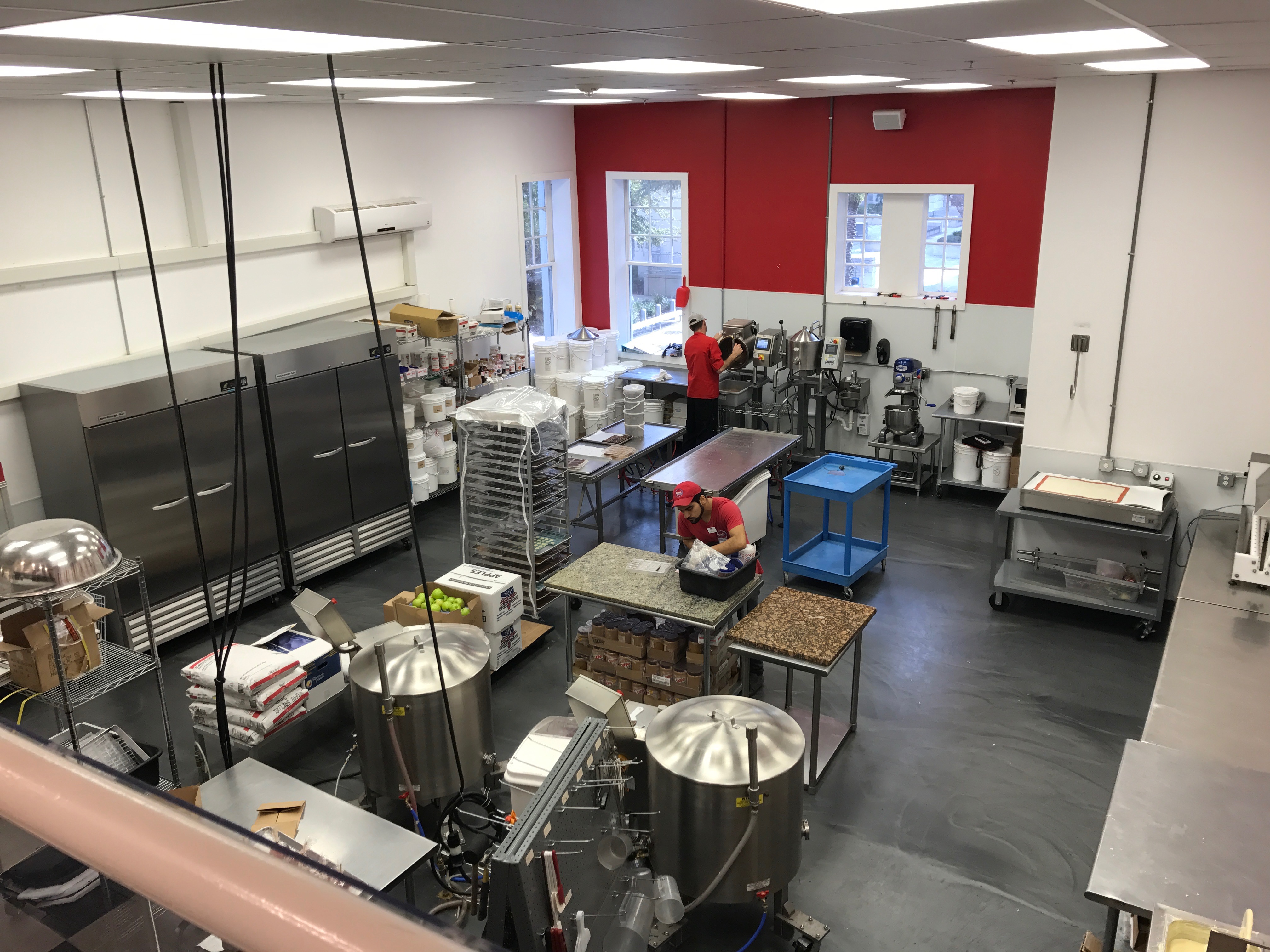
Candy Factory Kitchen Floor
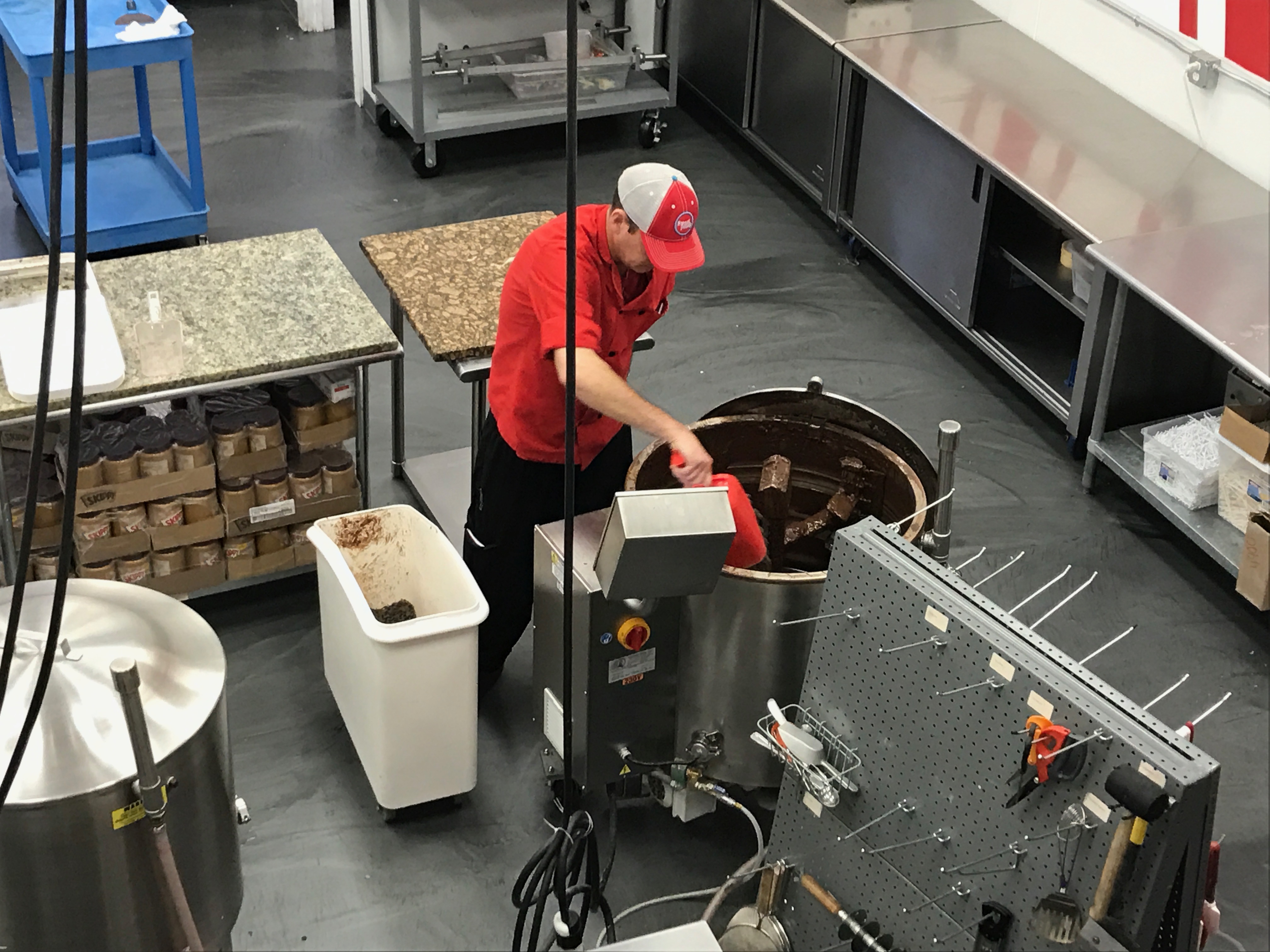
Making Chocolate!

Golden Ticket from the original Willy Wonka & the Chocolate Factory
I would be remiss if I did not mention the Treaty Oak, the largest tree in Jacksonville.
The legend goes as these trees were being cut down, someone claimed that this last tree was involved in a peace treaty between the Americans and Indians. This saved the tree from destruction.
Later research revealed this story to be hoax, created purely to save the tree.
Hopefully the upswing continues.
Part Of The Jacksonville City Skyline
// Oliver – Day 23 – Jacksonville

